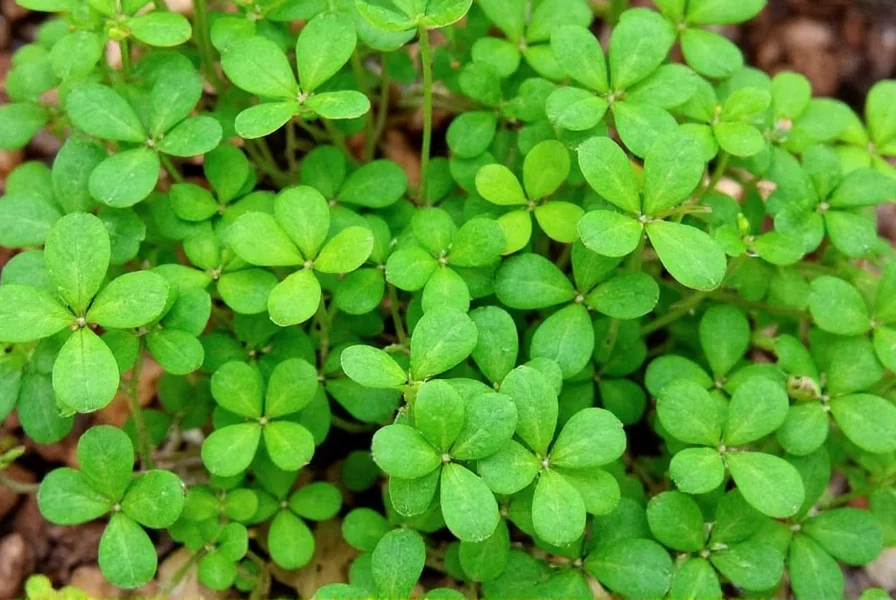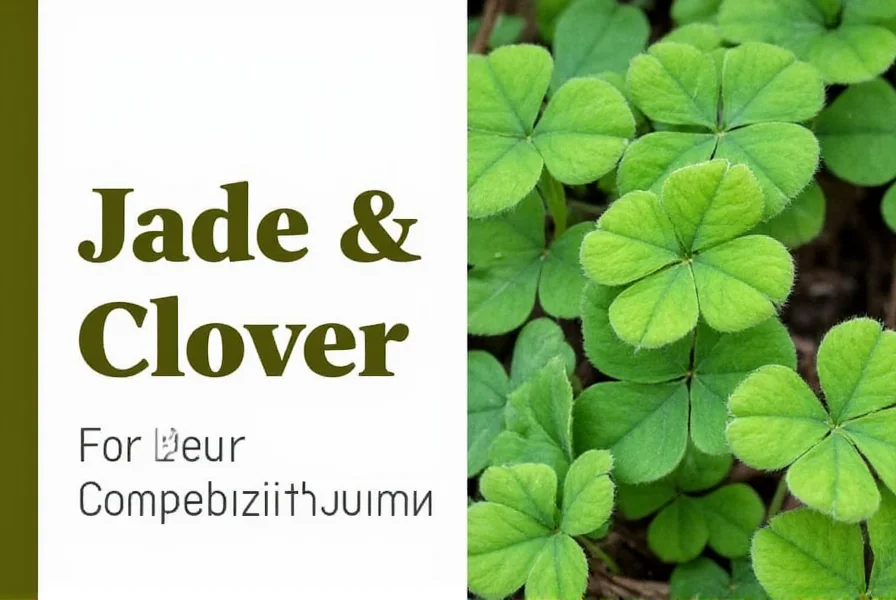Jade (Crassula ovata) is a popular succulent houseplant native to South Africa with thick, glossy leaves, while clover (Trifolium species) refers to flowering plants in the legume family commonly found in lawns and meadows. These plants have fundamentally different water, soil, and light requirements, making them generally incompatible for container gardening together.
Understanding Jade Plants and Clover Varieties
When researching "jade and clover," many gardeners seek clarification about these distinct plant types. Jade plants belong to the Crassulaceae family and thrive in arid conditions, while clover species are moisture-loving members of the Fabaceae family. This fundamental difference in botanical classification explains why they rarely coexist well in the same growing environment.
Jade Plant Characteristics and Requirements
Crassula ovata, commonly called jade plant or money plant, features:
- Thick, oval-shaped, glossy green leaves
- Woody stems that become tree-like with age
- Native to arid regions of South Africa and Mozambique
- Minimal water requirements (drought-tolerant)
- Preference for bright, indirect sunlight
- Well-draining sandy or gravelly soil
- Susceptibility to root rot with overwatering

Clover Species Overview
Clover refers to approximately 300 species in the Trifolium genus, including:
- White clover (Trifolium repens) - common lawn variety
- Red clover (Trifolium pratense) - often used in agriculture
- Microclover - smaller variety for lawns
- Shamrock (Oxalis species) - sometimes confused with true clover
Unlike jade plants, clovers prefer:
- Consistent moisture in soil
- Partial to full sun exposure
- Rich, nitrogen-fixing soil conditions
- Regular watering schedule
- Cooler temperatures than succulents
- Higher humidity environments
| Characteristic | Jade Plant | Clover |
|---|---|---|
| Water Needs | Minimal (drought-tolerant) | Moderate to high |
| Soil Type | Well-draining, sandy | Moist, nitrogen-rich |
| Light Requirements | Bright, indirect light | Partial to full sun |
| Temperature Preference | Warm (65-75°F) | Cooler (60-70°F) |
| Humidity Tolerance | Low | Moderate to high |
Can Jade and Clover Be Grown Together?
Professional horticulturists generally advise against planting jade and clover together in the same container. The primary reason is their opposing water requirements—jade plants suffer from root rot with excessive moisture, while clover requires consistently damp soil. When gardeners attempt this combination, one plant typically thrives while the other declines.
For those searching "growing jade plant with clover together," the reality is these plants represent different gardening approaches. Jade belongs to container gardening for indoor spaces, while clover typically grows outdoors in lawns or garden beds. Their botanical needs simply don't align for successful cohabitation.
Alternative Plant Pairings for Jade
If you're looking for companion plants that work well with jade, consider these drought-tolerant options:
- Other succulents like Echeveria or Haworthia
- Cacti varieties with similar water needs
- Aloe vera for contrasting textures
- Snake plants (Sansevieria) for low-light tolerance
Common Jade and Clover Care Mistakes
Gardeners often make these errors when caring for these plants:
- Overwatering jade plants (the most common cause of death)
- Planting jade in standard potting soil without drainage
- Expecting clover to thrive in dry, sandy conditions
- Confusing oxalis "shamrock" plants with true clover
- Placing jade in low-light conditions causing leggy growth
Practical Gardening Solutions
For those researching "jade plant and clover care differences," here are actionable tips:
- Use terracotta pots for jade to improve soil aeration
- Mix perlite or pumice into jade soil (up to 50% of mix)
- Water jade only when top 2-3 inches of soil are completely dry
- Provide clover with consistent moisture but avoid waterlogging
- Keep jade away from drafty windows during winter months

Conclusion
Understanding the distinct needs of jade plants and clover varieties prevents common gardening mistakes. While both make attractive plants, their different environmental requirements mean they shouldn't share the same container. Successful plant care begins with matching species to appropriate conditions rather than forcing incompatible plants together. Whether you're a beginner researching "basic jade plant care" or an experienced gardener exploring "clover varieties for lawns," respecting each plant's natural preferences yields the best results.
Frequently Asked Questions
Can I plant jade and clover in the same garden bed outdoors?
While possible in large garden spaces with distinct microclimates, jade and clover generally shouldn't share the same garden bed. Jade requires excellent drainage and minimal water, while clover needs consistent moisture. Creating separate planting zones with appropriate soil conditions for each plant yields better results than attempting to grow them side by side.
Why does my jade plant keep dropping leaves when near clover?
Leaf drop in jade plants near clover typically indicates overwatering. Clover requires more frequent watering than jade, causing excess moisture that leads to root rot in jade plants. The proximity means both plants receive the same watering schedule, which suits clover but damages jade. Separate their care routines completely for optimal health of both plants.
What are the best soil conditions for jade plants compared to clover?
Jade plants thrive in fast-draining soil with 50-70% mineral content (perlite, pumice, or coarse sand), while clover prefers rich, nitrogen-dense soil with higher organic matter. Jade soil should dry completely between waterings, whereas clover soil should remain consistently moist. Using specialized soil mixes for each plant type significantly improves their growth and health.
How often should I water jade plants versus clover plants?
Jade plants typically need watering only when the top 2-3 inches of soil are completely dry (every 2-3 weeks indoors), while clover requires watering when the top inch of soil feels dry (approximately 1-2 times weekly). During winter, jade may need watering only once a month, while clover still requires regular moisture. This significant difference in watering frequency makes them poor companions in the same container.
Can jade plants and clover survive in the same climate zone?
Both plants can survive in USDA zones 9-11, but with different requirements. Jade thrives as a container plant that can be moved indoors during cold snaps, while clover grows best as a ground cover in these zones. Outdoor jade needs protection from frost and excessive rain, whereas clover tolerates cooler temperatures but suffers in extreme heat. Their overlapping zone compatibility doesn't translate to container compatibility due to their contrasting moisture needs.










 浙公网安备
33010002000092号
浙公网安备
33010002000092号 浙B2-20120091-4
浙B2-20120091-4